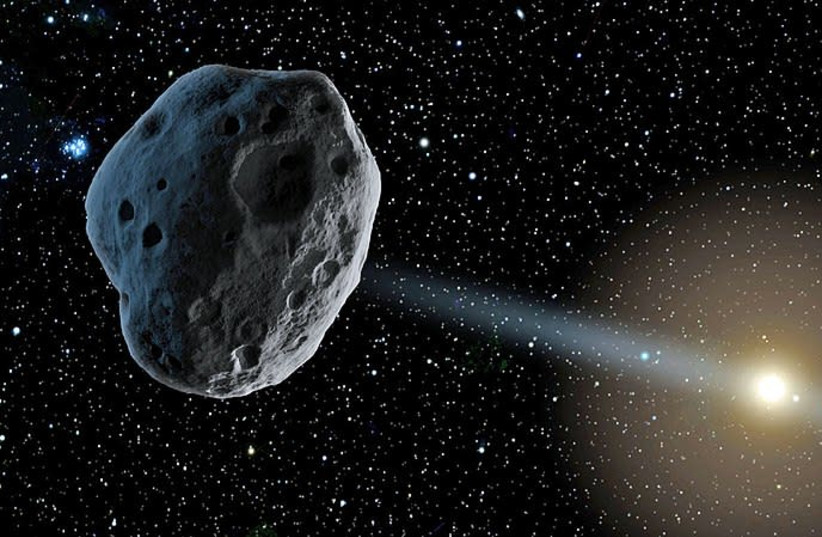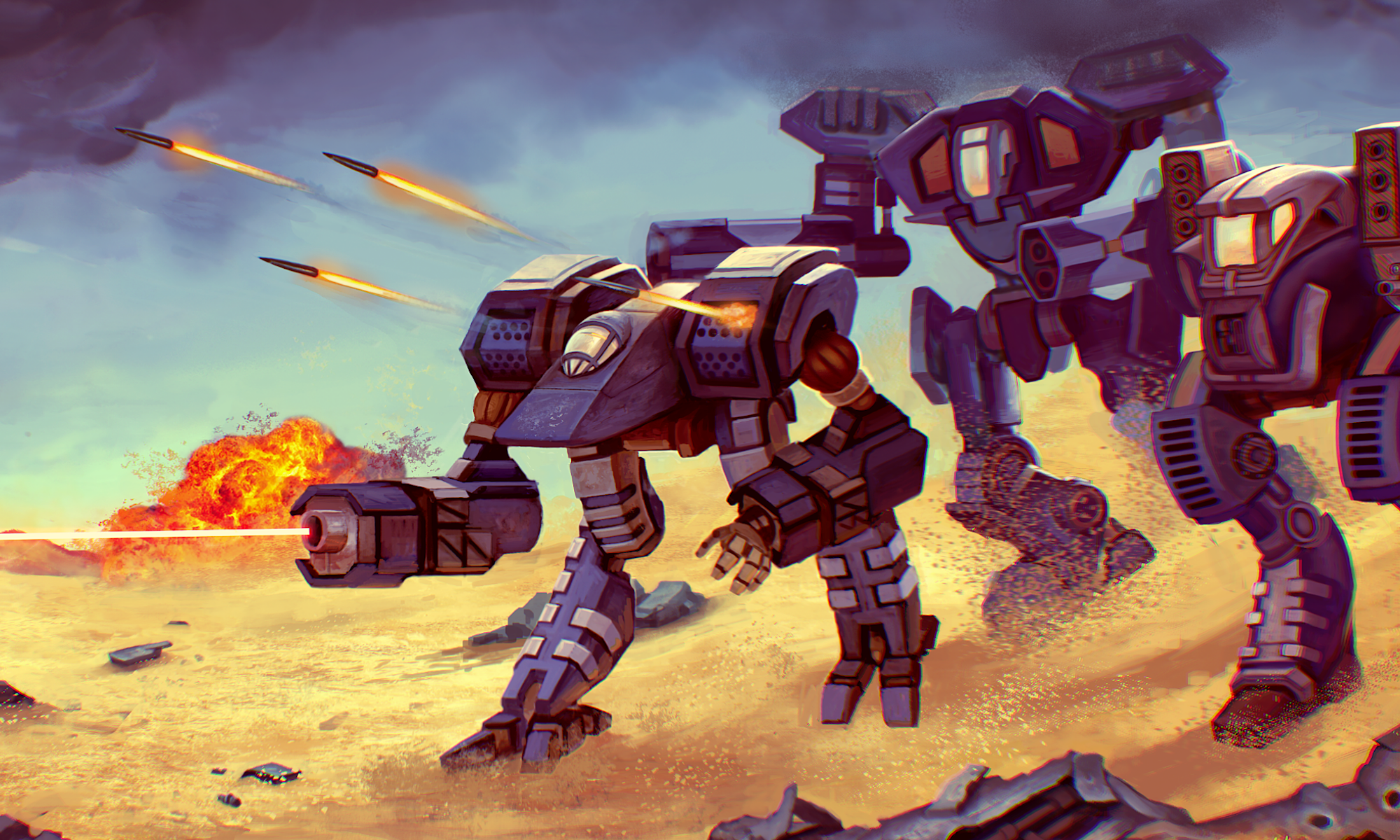If you happen to follow the Saving Throw Studios official Twitter account you may have noticed a recurring post we make on there often, “Real or REDLINE?” These posts are almost always about breaking news in regards to something astronomy or space exploration. They started as humorous joke posts when something in the news eerily fit with the near future setting we created for REDLINE: Tactical Card Combat. For example, this weekend both the Russians and Chinese announced plans to construct a permanent joint base on the moon. CPM confirmed?
I thought it might be fun this week to dive into some of the ideas behind the creation of REDLINEs story. Like everything else in the game, we put a lot of care and thought into making it and the purpose it serves. True, not every card game may need a strong story behind it to be fun, but it definitely adds to the overall experience and can build context for why you play.
Prologue
The first critical decision we had to make when crafting the REDLINE story was deciding on a setting. Placing the game in the distant future would make explanation of fantastic technology and far flung wars easy, as anything can just be made up or invented in a few thousand years of time. But sometimes these forward set sci-fi settings can become slightly unrelatable because they can lack connection to us.
For example, who cares about a war fought on the planet Thad in the Zetta-Stills B system? It’s just a bunch of made up names that are meaningless without further development.
If REDLINE was a sci-fi novel we could work on making the planet Thad worth fighting for by sharing the beauty of its blue leafed forests and steam vented deserts. However, as it’s a card game, all our energy and devotion is spent on making the rules and cards fun for players and so very little room is left in the game for Thad. Sorry Thad.
If you read last week’s article on the design history of REDLINEs efreets, you’ll know that early in that process we leaned heavily into using the fledgling technologies of today, like foam metals, to help explain their high tech functionality. Without realizing it, this was pushing us into a setting for the game that didn’t need to be over the horizon, but just around the corner. By trying to keep the efreets grounded, we also made the unconscious choice to keep the setting near future.
Which isn’t a bad place to be.
Unless you’ve been living under a rock, it’s hard to deny we are living in exciting times when it comes to space exploration. Even today, whenever, I see a rocket land on its tail I can’t help but wonder if this is what people felt like when they saw an airplane fly for the first time nearly one hundred years ago. The commercialization of space within the last ten years has been a game changer and also presents a unique backdrop to build the REDLINE story around.
So it was decided to set REDLINE in the year 2060 to allow us to tap into as much of the modern day as we could and create stronger connections with players.
But that also created a huge problem.
REDLINE was a game about giant mechs and war. In space. We don’t have any of that right now. So if we wanted to stay grounded, how were we going to get from SpaceX to Solar War in the span of only forty years?

History Repeats
“History doesn’t repeat itself, but it often rhymes.” – Mark Twain
As a history dork and teacher, I know that the best way to predict the future is often to look at the past. First day of class I always reminded my students that nations and technologies have and will always be changing, but the one constant throughout history has always been humanity. Our wants and needs today differ little from the ancient Egyptian farmer living in the Nile Delta or the immigrant coming to America in the 1880s. And by understanding how they worked to meet their needs we can come away with a stronger sense of how to meet our own though the same changing times.
It was that mindset that helped to shape and mold the REDLINE story. What the story needed to do was explain how space travel became commonplace, and how a war in space could begin. Luckily there’s plenty of notes left behind within history as to how this could happen.
The 2nd Space Race
If you were to bet one bitcoin on who would land an astronaut on Mars first, SpaceX or NASA, which would you drop your cold hard crypto on?
What if I gave you 50:1 odds on NASA?
It’s really astonishing just how far SpaceX has come since it was founded back in 2002. The US was still flying the Space Shuttle back then but after its retirement in 2011 things looked bleak as NASA often had to use Russian rockets for its own missions. Add in China’s intent to land on the moon and the US was falling behind in space, maybe never to come back.
But those madlads at SpaceX had a plan to revolutionize space travel by making it economical of all things. A rocket that can land itself and be reused again almost immediately? Many top experts said the idea was impossible.
Then, one day, SpaceX did just that and changed the space game forever.
Now other companies such as Blue Origin and Virgin Galactic are jumping into the market and what we are seeing isn’t a replay of the Space Race between the US and USSR, but more akin to the aviation boom of the 20s and 30s when private companies competed to build the worlds safest airlines or fastest race planes.
It’s very possible that by 2060 the groundwork being laid today with space travel may make a trip to Mars as mundane as a flight from London to New York. And in REDLINE this is the case as space flight is common between not only the major factions but also the private companies that helped to create many of the technologies that make it so easy.
Rock Wars
Most wars come down to one thing. Resources. So what, if any resources are there in space and are they even worth fighting over? It’s space after all! I mean, shouldn’t there be enough space in space to go around?
Though it’s in the pre-natal stages, asteroid mining promises a wealth of resources just outside our reach and beyond our imagination. Indeed, NASA recently discovered an asteroid named 16 Psyche, made entirely of ore that is estimated to be worth 10 quintillion dollars. To compare and contrast, that is worth more then our entire world’s economy. And that is just one asteroid in the entire belt!
If they can be harvested, the abundance of minerals in the asteroid belt hold within them a strong chance to revolutionize how we look at industry. Mining the rocks for metals could create a massive surplus that could be too costly and time consuming to send all the way back to Earth for processing. Instead it might be easier to create refining plants near the belt itself or on nearby Mars to speed up the system. This in turn could create a positive feedback loop where new technologies created to work and travel in space allow for greater efficiency when mining the belt and on and on.
Asteroid mining could be extremely lucrative. And like anything valuable, those riches would need to be protected as laying and holding claim to desirable asteroids could become quite tricky. Mars becomes much more attractive as real estate in this near future as a way tap into the belt as well. After jobs, soon come families as more and more people leave Earth to go live on habitats on the Moon, Mars or in orbit. Add everything up and you might find yourself with a solar land grab similar to the style of mercantilism popular in the 16th and 18th centuries famous for its colonies, imperialism, and of course, wars.

In many ways, under those circumstances, avoiding conflict may be nearly impossible. This is what happens in REDLINE as increased competition for access to the asteroid belt leads to small armed conflicts that eventually suck in the major powers which ultimately starts the Solar War in 2048.
The Solar War
The Solar War has been going on for twelve years already when REDLINE: Tactical Card Combat begins. In those twelve years numerous battles are won and lost, the efreets are invented, both Russia and China have been exiled off Earth and forced to create a new partnership to ensure their joint survival on Mars and a huge exodus has befallen Earth as much of the most advanced technology and scientific minds within the BRIMEA (Brazil Middle Eastern and Indian Alliance) disappear into the stars.
The story gets pretty fantastic at times no doubt, but we wanted it to feel believable and for players to connect with it which is why we made sure to give it such a grounded foundation from the start.
So every time you read the news and come across a spacey headline about the latest car SpaceX has shot into orbit or celebrity who wants to live in space, you’ll have to stop and wonder, is the real?
Or is it REDLINE?


